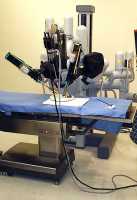Author Interviews, ENT, Environmental Risks, Occupational Health / 06.09.2018
Microwave Radiation Targeting Diplomats in Cuba and China Resembles Traumatic Brain Injury
MedicalResearch.com Interview with:
Beatrice Golomb, MD, PhD
Director of the Golomb Research Group
Professor of Medicine
University of California, San DiegoResponse:
MedicalResearch.com: What is the background for this study? How was the radiation emitted?
Response: Possibilities include surveillance devices (or things to jam them), electronic weapons, or, less likely, “innocent” communications devices.
MedicalResearch.com: What are the main findings?
Response: That all key features of diplomats’ experiences comport with pulsed radiofrequency/ microwave (RF/MW) radiation.
- The nature of the “sounds” heard – chirping, clicking, ringing, grinding/buzzing – are known “sounds” produced via the “microwave auditory effect” aka Frey effect. Different sounds are heard by different people, because the character of the sound heard depends on head dimensions (as well as pulse characteristics). Sounds were primarily heard at night: consistent with the microwave auditory effect, which requires low ambient noise. Some diplomats reported that sounds were spatially localized with “laserlike” specificity – said to defy known physics. This defies the physics of sound, but not radiation. The “sound” was reported to follow a diplomat as he walked, within the territory in which it was heard. Sound from a fixed source does not seem to follow people – but the microwave auditory affect does, often perceived as being located just behind (or in some cases just above, or inside) the head of the person, irrespective of the person’s orientation relative to the radiation source.
- The symptoms reported following these experiences also fit. Rates of reported symptoms in diplomats – headache, cognitive and sleep problems dominating, then dizziness, tinnitus, anxiety, nausea at lesser but still high rates – match closely with rates of the same symptoms reported in a 2012 Japanese study of people who report health effects from radiation, typically including pulsed RF/MW. Hearing loss is a relatively distinctive and prominent symptom in both diplomats, and RF/MW affected civilians. In both groups, some reportedly experience speech problems, balance problems, nosebleed, and strange sensations of vibration and pressure.
- Hundreds (if not thousands) of studies have illuminated mechanisms by which these effects may arise, centered on oxidative stress (the kind of injury that antioxidants help to defend against) – and many downstream effects of oxidative stress (membrane damage, blood brain barrier impairment with potential for brain swelling, inflammation, voltage gated calcium (and other) channel effects (which can also lead to oxidative stress), mitochondrial impairment, autoimmune activation, etc.)
- There is precedent for use of microwaves in the diplomat setting. It is known that the US embassy in Moscow was microwaved for several decades beginning in the early 1950s (with some embassy staff citing – disputed - health problems). A 1976 NY Times story (“Moscow rays linked to U.S. bugging”) referenced speculation these were for surveillance; the Soviets claimed their purpose was to thwart U.S. listening devices on the roof of the embassy.


















![MedicalResearch.com Interview with: Cole Wayant Oklahoma State University Center for Health Sciences ‐ Analytical and Institutional Research Tulsa, OK MedicalResearch.com: What is the background for this study? What are the main findings? Response: New FDA-approved oncology drugs are essential to oncology practice. These drugs may immediately change clinical care by offering better treatments for common, lethal forms of cancer. But, new FDA-approved oncology drugs are expensive and have been shown to have variable efficacy. Given the importance of new FDA-approved oncology drugs to patients and physicians, the trials that underpin the FDA-approval of these drugs must be free from bias and transparent. Therefore, we investigated the financial relationships between oncologist-authors of clinical trials that underpin FDA-approvals. MedicalResearch.com: What should readers take away from your report? Response: The key takeaway from our study is that oncologist-authors often do not fully disclose their financial relationships with pharmaceutical companies. Financial disclosures are important for the reasons of transparency and trust between physicians and other stakeholders, such as patients. Disclosing conflicts of interest helps readers interpret the findings of a research study, especially given the fact that drug companies finance their own drug trials. MedicalResearch.com: What recommendations do you have for future research as a result of this work? Response: In the future, beyond recommending that authors fully disclose all financial relationships with the sponsor of the trial, I recommend that journals use the Open Payments Database to verify the accuracy and completeness of author disclosure statements. Doing so is a small first step toward mitigating the potential for financial bias in the oncology literature.” Disclosures: I do not have anything else to add. None of the authors have conflicts of interest - financial or otherwise. Citation: Financial Conflicts of Interest Among Oncologist Authors of Reports of Clinical Drug Trials [wysija_form id="3"] [last-modified] The information on MedicalResearch.com is provided for educational purposes only, and is in no way intended to diagnose, cure, or treat any medical or other condition. Always seek the advice of your physician or other qualified health and ask your doctor any questions you may have regarding a medical condition. In addition to all other limitations and disclaimers in this agreement, service provider and its third party providers disclaim any liability or loss in connection with the content provided on this website.](https://medicalresearch.com/wp-content/uploads/Cole-Wayant.jpg)













